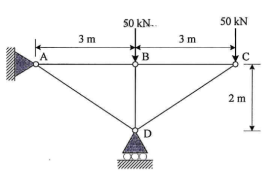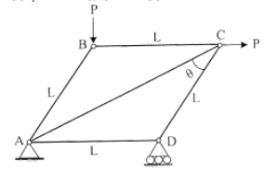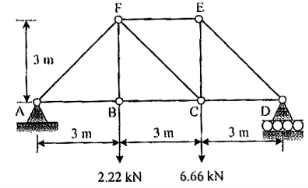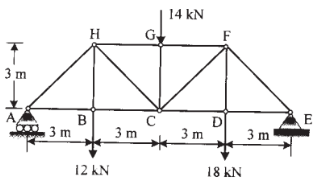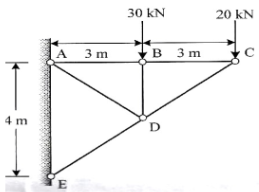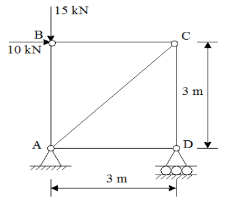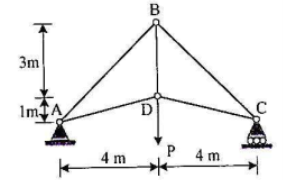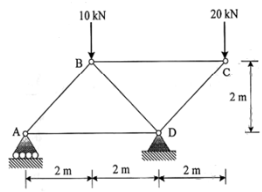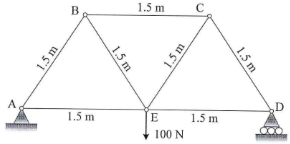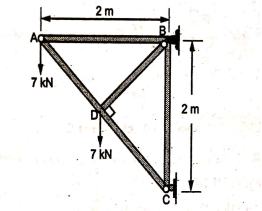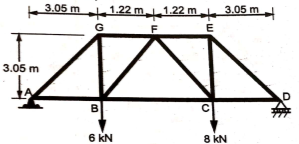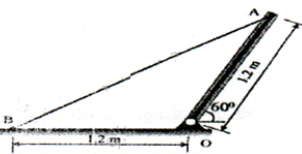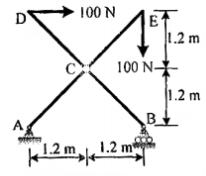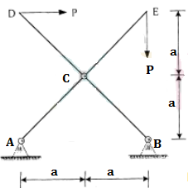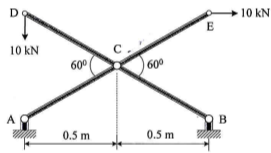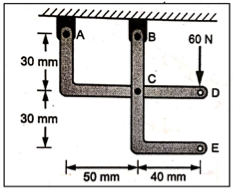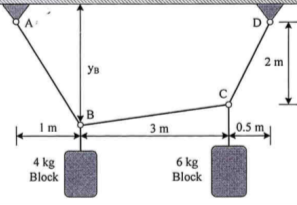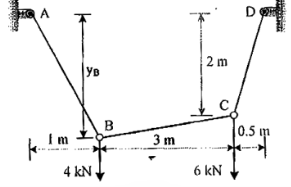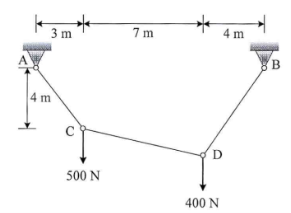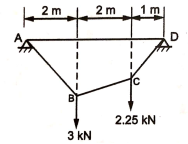Que No | Question Statement | QueNo | Question Statement |
| THEORY QUESTIONS | ||
1 |
| ||
TRUSSES | |||
1 | Determine the force In each member of the truss as shown in Fig and tabulate the result with magnitude and nature of force in the members.
| 2 | Determine the forces in each member of the plane truss as shown in Fig. in terms of the external loading and state if the members are in tension or compression. Use θ = 30°, L = 2 m and P = 100 N.
|
3 | Determine the force in members FE, FC and BC of the truss using method of sections and state if the members are in tension or compression. Given P1 = 2.22 kN and P2 = 6.66 kN. Refer Fig.
| 4 | Determine the magnitude and nature of forces in the members BC, HC And HG of the truss loaded and supported as shown in Fig.
|
5 | Determine the forces in each member of the truss and state if the members are in tension or compression. Refer Fig.
| 6 | Determine the axial forces in each member of the plane truss as shown in Fig.
|
7 | Members AR and RC can support a maximum compressive force of 800 N and members AD, DC and RD can support a maximum tensile force of 2000 N. Determine the greatst load P the truss can support. Refer Fig.
| 8 | Determine support reaction and find the forces in magnitude and dirction of the members AD, BD and BC of the simply supported truss as shown in Fig. by method of section. Tabulate the result with magnitude and nature of force in the members.
|
9 | The roof truss support the vertical loading shown in Fig. Determine the force in members BC, CK and KJ and state if these members are in tension or compression.
| 10 | Determine the forces in the members of the truss loaded and supported as shown in the Fig. Tabulate the result with magnitude and nature of force in the members.
|
11 | Determine Force Developed in each member of the truss as shown in figure.
| 12 | Determine Force Developed in each member of the truss as shown in figure.
|
13 | Determine the force in each member of the truss and state if the members are in tension or compression.
| 14 | Determine the force developed in members GB and GF of the bridge truss and state if the se members are in tension or compression.
|
FRAMES | |||
1 | The uniform 18 kg bar OA is held in position shown in Fig. by the smooth pin at O and the cable AB. Determine the tension T in the cable and the magnitude and direction of the external pin reaction at O.
| 2 | Determine the magnitude of pin reactions at A, B and D for the frame loaded as shown in Fig.
|
3 | Determine the reactions at the internal hinge C for the frame loaded and supported as shown in Fig.
| 4 | Determine the components of reaction at C for the frame loaded and supported as shown in Fig.
|
5 | Determine the horizontal and vertical component of reactions at A & B for the frame loaded and supported as shown in figure.
| 6 | Determine the reactions at the hinges of the frame loaded and supported as shown in figure.
|
7 | Determine the reaction components at the hinges of the frame as shown in figure.
| 8 | Determine the Components of the reactions at A and B if 60 N load is applied at point D.
|
CABLES | |||
1 | Cable ABCD supports the 4 kg block E and 6 kg block F as shown in Fig. Determine the maximum tension in the cable and the sag of point B.
| 2 | Determine maximum tension developed in the cable system as shown in figure.
|
3 | Cable ABCD supports the 4 kN and 6 kN loads at points B and C as shown in Fig. Determine the maximum tension in cable and the sag of point B.
| 4 | A cable supported at A and D at the same level over a span of 30 m is loaded as shown in Fig. Determine the maximum tension in the segment of the cable.
|
5 | Two loads are suspended as shown in Fig. from cable ABCD. Knowing that dc = 0.75 m and db= 1.125 m. determine the component of reaction at A maximum tension in the cable.
| 6 | The cable segment. support the loading as shown in Fig. Determine the support reaction and maximum tension in segment of cable.
|
7 | Cable ABCD supports the 4 N flowerpot E and 6 N flowerpot at F. Determine the maximum tension in the cable and the sag of point B.
| 8 | Determine the sag at C of a cable loaded as shown, if the maximum tension in the cable is 3.6 kN.
|
